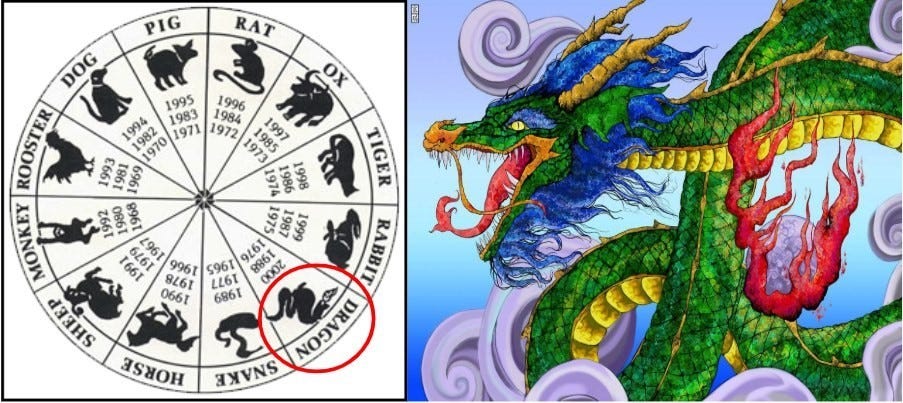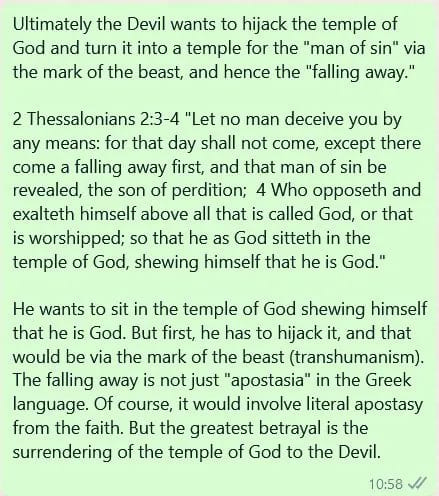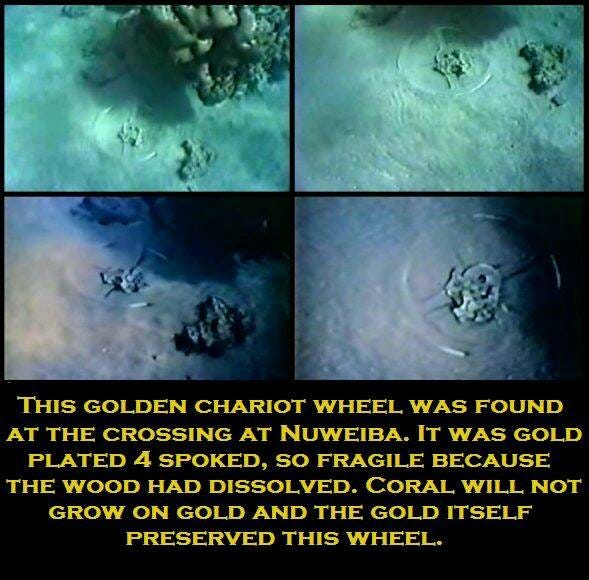This post is a continuation from where I had stopped in Pharaoh King of Egypt (Part 1), where I have shown from scripture the connection between the leviathan of Job 41, Pharaoh king of Egypt of Ezekiel 29 and Gog of Ezekiel 38, 39. Speaking about the leviathan, Isaiah by inspiration of the Holy Ghost said:
Isaiah 27:1 "In that day the LORD with his sore and great and strong sword shall punish leviathan the piercing serpent, even leviathan that crooked serpent; and he shall slay the dragon that is in the sea."
That means that something will take place “in that day” when the LORD with his sore and great and strong sword shall punish the leviathan, the dragon of the sea. The phrase “in that day” is also found in this passage of scripture about Gog:
Ezekiel 38:18-19 "And it shall come to pass at the same time when Gog shall come against the land of Israel, saith the Lord GOD, that my fury shall come up in my face. 19 For in my jealousy and in the fire of my wrath have I spoken, Surely in that day there shall be a great shaking in the land of Israel; … 21 And I will call for a sword against him throughout all my mountains, saith the Lord GOD: every man’s sword shall be against his brother."
The context of this passage of scripture is when Gog shall come against the land of Israel, and “in that day” there shall be a great shaking in the land of Israel. Moreover, in that day, God shall call for a sword against Gog, just like how he would slay the dragon that is in the sea in his wrath and sore displeasure. This connects to:
Ezekiel 29:3 "Speak, and say, Thus saith the Lord GOD; Behold, I am against thee, Pharaoh king of Egypt, the great dragon that lieth in the midst of his rivers, which hath said, My river is mine own, and I have made it for myself."
Pharaoh king of Egypt is the great dragon, the leviathan that God shall punish in that day, when he shall come against the land of Israel. In fact, this was God who put hooks in his jaws to draw him out in the open.
Ezekiel 29:4 "But I will put hooks in thy jaws, and I will cause the fish of thy rivers to stick unto thy scales, and I will bring thee up out of the midst of thy rivers, and all the fish of thy rivers shall stick unto thy scales."
This verse connects to the passage about Gog of Ezekiel 38:
Ezekiel 38:4 "And I will turn thee back, and put hooks into thy jaws, and I will bring thee forth, and all thine army, horses and horsemen, all of them clothed with all sorts of armour, even a great company with bucklers and shields, all of them handling swords:"
In the same way, it was God who put hooks into the jaws of Gog to bring him forth in the open, him and all his army, in the day of his wrath, to slay the dragon that is in the sea. Notice how God will cause all the fish in the rivers to stick to the leviathan, Pharaoh king of Egypt, in the same way he will bring forth Gog’s army, horses and horsemen out in the open? In Part 1, we have uncovered a connection between the Pharaoh king of Egypt (Gog) and the entity that is symbolized by the unfinished pyramid and the all-seeing eye at the back of the US dollar:
1 Timothy 6:10 "For the love of money is the root of all evil: which while some coveted after, they have erred from the faith, and pierced themselves through with many sorrows."
Paul tells us that the love of money is the root of all evil, and this is the very reason why strange occult symbols are embedded in the design of money. Just like the love of God will compel a born again believer to walk in a narrow path that leads unto life, the love of money will also cause the rest of the world to walk in the broad way that leadeth unto destruction, and many will be there at. Those who worship money automatically worship the little-g god as symbolized by the occult symbols on the money, and they will be led to do things out of the love of money.
Luke 9:24 "For whosoever will save his life shall lose it: but whosoever will lose his life for my sake, the same shall save it."
Everything that is happening today is spiralling towards the end. The mark of the beast is the end of humanity, and it is an irreversible tragedy for those who will take it. The past two to three years has been a test for Christians and churches in particular, if they would willingly surrender their 46-chromosomes bodies for genetic modification in order to keep their lives. It is the will of the little-g god as symbolized by the unfinished pyramid and all-seeing eye — the Pharaoh king of Egypt (Gog), that all humanity should surrender their temples made without hands, to receive a mark in their right hand or in their forehead.
Revelation 13:16-17 "And he causeth all, both small and great, rich and poor, free and bond, to receive a mark in their right hand, or in their foreheads: 17 And that no man might buy or sell, save he that had the mark, or the name of the beast, or the number of his name."
Without the mark, no man might buy or sell. Therefore, those that will receive the mark of the beast do that out of the love of money (as opposed to the love of God), and this will be the “falling away” (Greek: apostasía) as prophesied in 2 Thessalonians 2:3, before that man of sin — the son of perdition, who opposeth and exalteth himself above all that is called God, be revealed, so that he as God shall sit in the temple of God (our 46-chromosomes body), shewing himself that he is God. That would be Pharaoh king of Egypt (Gog), who shall be revealed right after the mark of the beast is implemented worldwide.
In his book Ages in Chaos, Immanuel Velikovsky had demonstrated proofs to show that the Hyksos of Egypt were in fact the Amalekites of the Bible. The Hyksos were a foreign power that invaded ancient Egypt and ruled as Pharaohs. The seat of power of these kings was the city of Avaris in the Nile delta, from where they ruled over Lower and Middle Egypt up to Cusae. According to Immanuel Velikovsky, shortly after the plagues on Egypt and the children of Israel crossing of the Red Sea, Israel encountered the Amalekites in Rephidim, which is in Arabia. Archaeologists have discovered that Mount Sinai is the present day Mount Jabal al Lawz.
Exodus 17:8 "¶ Then came Amalek, and fought with Israel in Rephidim."
After the battle, the Amalekites went on into Egypt, which they conquered easily because Egypt had already been wasted by the plagues, and because most of the Egyptian army had recently drowned in the Red Sea.
Exodus 15:3-5 "The LORD is a man of war: the LORD is his name. 4 Pharaoh’s chariots and his host hath he cast into the sea: his chosen captains also are drowned in the Red sea. 5 The depths have covered them: they sank into the bottom as a stone."
In the early 19th Century an ancient papyrus known as the Ipuwer Papyrus was found in Egypt. It was taken to the Leiden Museum in Holland and interpreted by A.H. Gardiner in 1909. The papyrus describes violent upheavals in Egypt, starvation, drought, escape of slaves (with the wealth of the Egyptians), and death throughout the land. The papyrus was written by an Egyptian named Ipuwer and appears to be an eyewitness account of the effects of the Exodus plagues. Some of the accounts closely parallels the Book of Exodus, for example:
Papyrus 2:10 “The river is blood.” (Exodus 7:20)
Papyrus 4:14, 6:1 “Trees are destroyed. No fruit nor herbs are found.” (Exodus 9:25)
Papyrus 2:10 “Forsooth, gates, columns and walls are consumed by fire.” (Exodus 9:23-24)
Papyrus 9:11 “The land is not light…” (Exodus 10:22)
Moreover, according to the Ipuwer Papyrus, there was a foreign invader that approached out of the gloom of the desert, and they crossed the borders and entered the shattered land of Egypt.
Papyrus 3:1 “Forsooth, the Desert is throughout the land. The nomes are laid waste. A foreign tribe from abroad has come to Egypt.”
As there was no longer any royal power in Egypt, in the following weeks, the cities turned into scenes of looting. Justice ceased to function. The mob dug in the debris and in the public records, where contracts, notes and pledges, and deeds to real property were filed. The plunderers searched among the wreckage of the royal storehouses.
Papyrus 6:9 “Forsooth, the laws of the judgment-hall are cast forth. Men walk upon [them] in the public places.”
Papyrus 10:3 “The storehouse of the king is the common property of everyone.”
The residence of the Pharaoh was turned into a heap of ruins, and governmental authority was completely shattered. The Hyksos (Amalekites) then made Avaris their capital. According to the Jewish Virtual Library, the Hyksos were “Asiatics” who exercised political control over Egypt around the time of the Exodus. The Ipuwer Papyrus tells us:
Papyrus 15:1 “What has happened? through it is to cause the Asiatics to know the condition of the land.”
Who were the Hyksos?
The Egyptian historian Manetho, who lived in the Ptolemaic age, whose writings has been preserved by Josephus Flavius, Eusebius, and Sextus Julius Africanus tells us in Josephus’ pamplet, Against Apion, that:
I will quote his [Manetho's] own words, just as if I had produced the man himself in the witness box:
Tutimaeus. In his reign, I know not why, a blast of God's displeasure broke upon us… A people of ignoble origin from the east, whose coming was unforeseen, had the audacity to invade the country, which they mastered by mainforce without difficulty or even a battle. — Josephus, Against Apion (trans. St. Thackeray), I, 74-75.
Manetho, who wrote in Greek, explained their being named Hyksos:
Their race bore the generic name of Hycsos [Hyksos], which means "king-shepherds." For Hyc in the sacred language denotes “king," and sos in the common dialect means "shepherd" or "shep-herds"; the combined words form "Hycsos." — Ibid. At present the preferred etymology sees in the name Hyk-sos the Egyp-
tian equivalent for "the rulers of foreign countries."
Some ancient Arab writers have also recorded the invasion of Egypt by the Amalekites. For example, Al-Samhudi (844-911) wrote:
“The Amalekites reached Syria and Egypt and took possession of these lands, and the tyrants of Syria and the Pharaohs of Egypt were of their origin.” — Yaqut, quoted by al-Samhudi, Geschichte der Stadt Medina, ed. F. Wiistenfeld in Abhandlungen der Gesellschaft der Wissenschaften zu Gottingen, Historisch-philologische Klasse, Vol. IX (1860), 1861, p. 26.
Masudi, who wrote about the plagues that befell Arabia, and the flight of the Amalekites from Mecca, and the flood, recounted also the conquest of Egypt by the Amalekites.
“An Amalekite king, el-Welid, son of Douma, arrived from Syria,
invaded Egypt, conquered it, seized the throne and occupied it with-out opposition, his life long.” — Macoudi, Les Prairies d or, II, Chap. XXXI.
In another work of Masudi, he gave a more detailed account of the conquest of el-Welid:
“El-Welid, son of Douma, advanced at the head of a numerous army, with the intention to overrun diverse countries and to overthrow their sovereigns.” — L’Abreges des merveills (French translation by Carra de Vaux; Paris, 1898), p. 342.
The Hyksos had kings named “Apop” who ruled from the city of Avaris. One of the first and most prominent of the Hyksos rulers was Apop; the last king of the Hyksos was also Apop. Immanuel Velikovsky then found the link between "Apop" of Egypt and the word "Agag," the king of the Amalekites (1 Samuel 15:8). According to Immanuel Velikovsky in his book, titled Ages in Chaos:
"In the history of Egypt the most frequently mentioned name of the Hyksos kings is Apop [Apopi]. One of the first and most prominent of the Hyksos rulers was Apop; the last king of the Hyksos was also Apop. The early Hebrew written signs as they are preserved on the stele of Mesha show a striking resemblance between the letters G (GIMEL) and P (PEI).
No other letters are so much alike in shape as these: each is an oblique line connected to a shorter, more oblique line, and is similar to the written number 7, the size of the angle between the two oblique lines constitutes the only difference."
That may explain how "A-pop" should be read "A-gog." This being said, I'm not saying that all the above is thus saith the LORD. Those were just some very interesting observations that happen to tie in with what we shall see later from the 1611 King James Bible. Everything just ties in nicely together, especially when we consider the identity of Gog in Ezekiel 38 and 39, which we are about to discover more in Part 3.












![May be an image of text that says "Letter Image Name[30] Text 1 1 gĩml っ ੭ pẽ" May be an image of text that says "Letter Image Name[30] Text 1 1 gĩml っ ੭ pẽ"](https://substackcdn.com/image/fetch/$s_!bHwk!,w_1456,c_limit,f_auto,q_auto:good,fl_progressive:steep/https%3A%2F%2Fbucketeer-e05bbc84-baa3-437e-9518-adb32be77984.s3.amazonaws.com%2Fpublic%2Fimages%2F2339df99-ea1d-456c-854c-3f0e854eaeb8_211x203.jpeg)
Very interesting 🤔, I did not know any of that, I'm looking forward to reading #3 is it ready lol 😂, im ready, thank you 🙌🎚️❤️